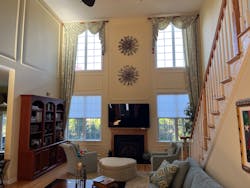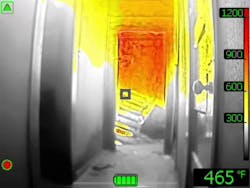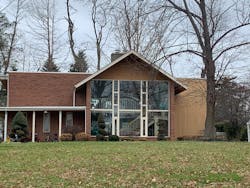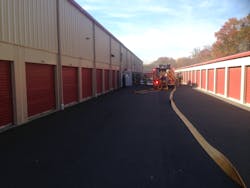Fire Studies: Modern Operations in Residential and Commercial Occupancies
The basic function of any fire department is the suppression of fire in any setting. The modern-era emergency responder must continue to train and prepare for all of the situations and circumstances that can be found on arrival at any fire scene. To do so means that the playbook by which we operate must change and adapt to modern-era incidents. There are no one-plan-for-all solutions within our profession, and to stay prepared is to continue to train for all of the situations that might arise.
The modern playbook
Three considerations drive compartment fire dynamics:
The compartment. Consider changes in square footage, surface coverings and decorations, construction materials that are found in buildings and room configurations that can have an influence on fire growth and energy release.
Fuel loading/heat release rate (HRR). Fuels that are found in today’s response settings have a much higher energy release per cubic foot of fuel load than those of decades past. Exponential increases in HRR play a vital role in thermal insult, fire spread, and damage to the fuels and construction materials that are exposed to it.
- Mike Daley will lead the "Modern Solutions to Problematic Extrications" Hands-on class and present "Fireground Strategies: Size-Up for Suppression and Survivability" at Firehouse Expo 2023.
Air track management. The amount of air flow into the compartment that’s burning directly correlates to the energy that’s liberated from the combustion process. Simply put, if you control the flow path, you influence the combustion process greatly.
With the significant changes in the fire dynamic properties that are noted above, changes must be made on the fireground to influence the outcome of incidents. You can’t continue to deploy tactics that don’t represent these increases in variables.
Each variable will have a considerable effect on incidents in myriad buildings and compartments. To try to cover all of these possibilities would be well beyond the capabilities of this discussion; rather, it’s simpler to break this discussion into two differing types of settings that we might encounter: residential and commercial.
Modern residential ops
Modern residential settings are made from varying types of construction materials, including lightweight and engineered structural components. These buildings have become much larger in size than those that were constructed before them, which allows for possible living areas on every floor of the structure, including within the variable-grade/below-grade areas. These structures’ substantial setback from the street requires the initial engine to reconsider location of arrival and choice of handline to stretch to reach the fire area with the correct gpm to put out the fire.In addition, residential operations must consider the following:
Fire behavior and dynamics. HHR fuels release more than two-and-a-half times the energy that natural organic fuels that were used in residential settings in the past release. Larger compartmentation in residential settings allows for dynamic events to occur within the compartment prior to department arrival.
Compartment properties. Composition, material density, insulation and thermal conductivity of compartment materials can increase the exponential release of energy throughout the structure. Modern open floor plans and larger transparent surfaces of exterior walls (glass) can allow energy to spread particularly quickly to other areas of a residential structure.
Residential structures that are more than 3,000 square feet in size are considered “estate homes,” and operations in these structures require a plan that’s more suited to absorb the energy that’s found in more commercial-like settings.
Actionable intelligence. “Actionable intelligence” should be based on key information that’s factual on scene of any setting; whether the scene is residential or commercial is irrelevant. This intel includes: current fire behavior/dynamic events; full load (contents and structure); air track management (flow path/“anti-ventilation”); accessibility for suppression; and thermal imager data (survivability, smoke properties, compartment behavior, etc.).Survivability. Many a discussion regarding survivability has occurred over the firehouse kitchen table (often in heated fashion). I prefer to keep this topic at the level of basic facts.
Furnishings that are found in today’s settings emit more energy and a much larger concentration of lethal smoke; so, if there’s to be survivability, then the space must be survivable. It’s the responsibility of the first-arriving unit to make the compartment survivable. If it’s to be survivable for the victim, three areas of concern are critical:
- Location: What’s the proximity of the victim to the products of thermal insult/fractional effective dosage (FED) of the smoke?
- Isolation: Is the victim separated from the hazards via a wall/door/smoke barrier?
- Elevation: Is the victim who is on the same floor of the fire more survivable than the victim who is on the upper floor of the open floor plan?
Coordination of functions. Entering a residential structure for suppression must be coordinated with sufficient personnel to perform ventilation concurrently. Without the proper personnel available, the focus must be placed on suppression first, via any means that are available.
Strategic considerations. There is no one-plan-fits-all solution when it comes to strategy and tactics. Strategy and tactics decisions are driven by conditions on arrival, survivability, resources that are responding and whether various tasks can be performed safely simultaneously. In circumstances where there aren’t enough resources to do so, the tactics that are applied must match the capabilities of the initial-arriving assignment.Modern commercial ops
Commercial buildings typically have larger footprints and much larger and more variable fuel loads than residential settings have. These considerations lead to a very confusing floor layout, which requires initial considerations of deployment of hoselines to get to the fire area particularly quickly and efficiently. Moreover, many of the construction types in these settings are prevalent to early collapse.
In addition, commercial operations must consider the following:
Fire behavior and dynamics. Larger quantities of fuels along with various types of fuels result in rapid fire progression unless the initial flow overwhelms the combustion process as it exponentially releases energy. Large streams are needed immediately on arrival.Compartment properties. Larger air volumes and larger fuel loads attack the building rapidly, which can lead to early failure at multiple points. Most of the materials that are used in these types of construction conduct energy very quickly throughout the rest of the building, which leads to faster spread and involvement of other sections of the building than typically is the case in residential constructions.
Coordination of functions. Initial alarm assignments to commercial buildings must be much more robust than initial alarm assignments to residential buildings to handle the potential fires that can result in these settings. Commercial buildings require delivery of larger fire flows, operated by a larger pool of personnel, with a larger cache of equipment than is the case in residential buildings, to deal with the hazards that are found at these incidents.
Strategic considerations. Larger noncompartmented floor areas allow for rapid fire spread quickly. Larger-caliber streams must be sent into operation to cover the larger spans that are found in these buildings. It might require multiple larger-caliber streams to be put into service on arrival to begin to absorb the energy that’s created by the combustion process within the compartment.
Reeducation
Considering the need for a new outlook on fireground operations, the main question is where does one start? Many believe that the best place to start is at the entry level: Indoctrinate them correctly from the onset. That certainly makes sense. However, what will their department members think when the recruits come in with these new concepts? Will the new concepts be embraced? Will they be cast aside? Will the new department members be told that they will learn “how we do it here”?
The best place to start is a return to the beginning for all of us. This means from the chief’s office through to the administrative officers, the shift commanders, the company leaders and the firefighters, including the surrounding departments that operate within the first-alarm assignments. All parties must get to the table with the purpose of improving the efficiency and safety during fireground operations. The inclusion of data from the modern testing in department operations is a needed change for that efficiency and safety improvement to happen.
Change is difficult for many to accept, but for the purpose of safety and efficiency, it’s the direction that the fire service must take.
About the Author
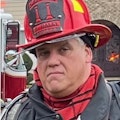
Michael Daley
MICHAEL DALEY, who is a Firehouse contributing editor, recently retired as a 37-year veteran who served as a captain and department training officer in Monroe Township, NJ. He is a staff instructor at multiple New Jersey fire academies and is an adjunct professor in the Fire Science Program at Middlesex County College. Daley is a nationally known instructor who has presented at multiple conferences, including Firehouse Expo and Firehouse World. His education includes accreditations as a Chief Training Officer and a Fire Investigator, and he completed the Craftsman Level of education with Project Kill the Flashover. Daley is a member of the Institution of Fire Engineers and a FEMA Instructor and Rescue Officer with NJ Urban Search and Rescue Task Force 1. He operates Fire Service Performance Concepts, which is a training and research firm that delivers and develops training courses in many fire service competencies.

